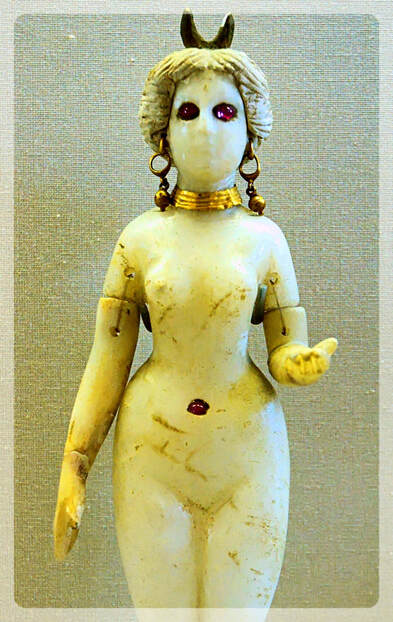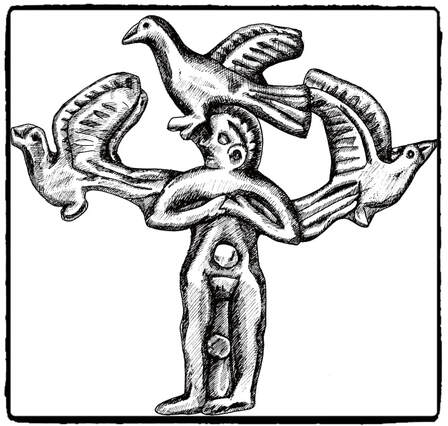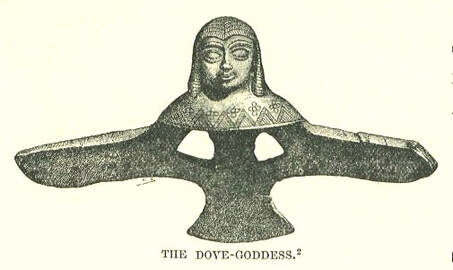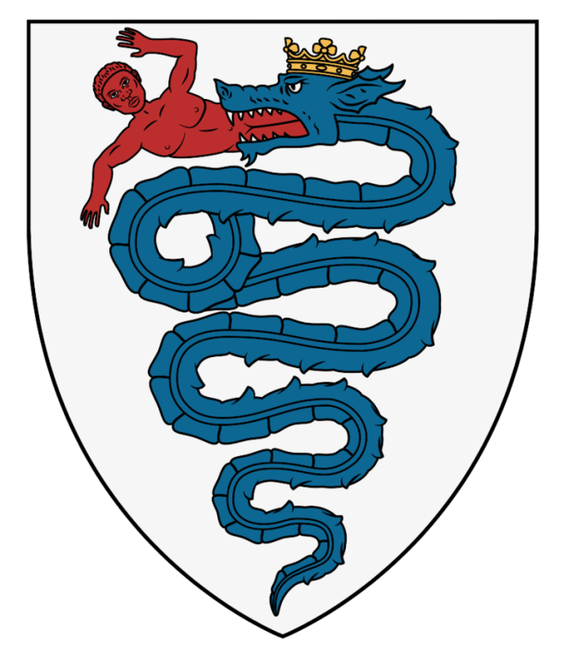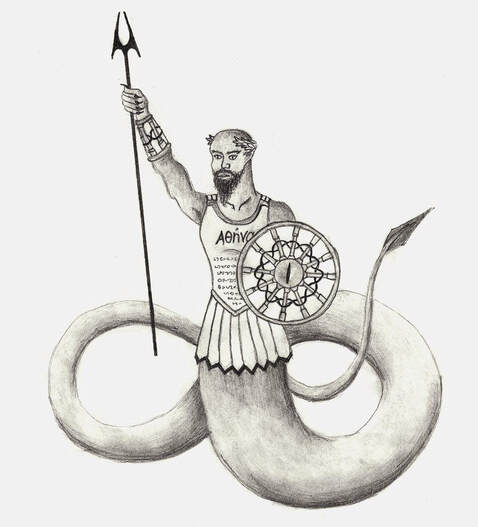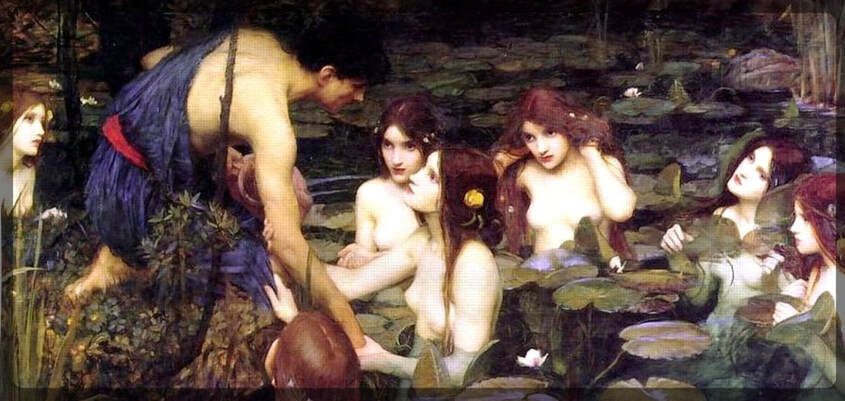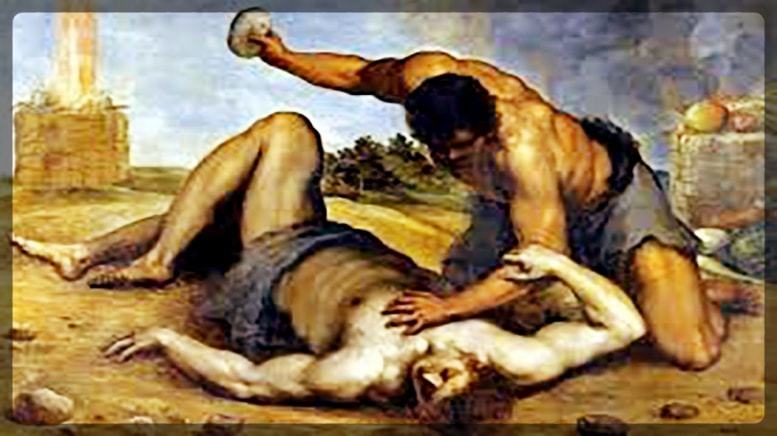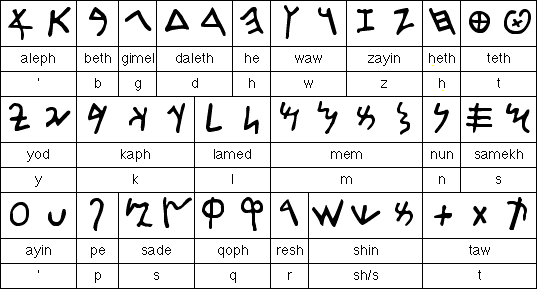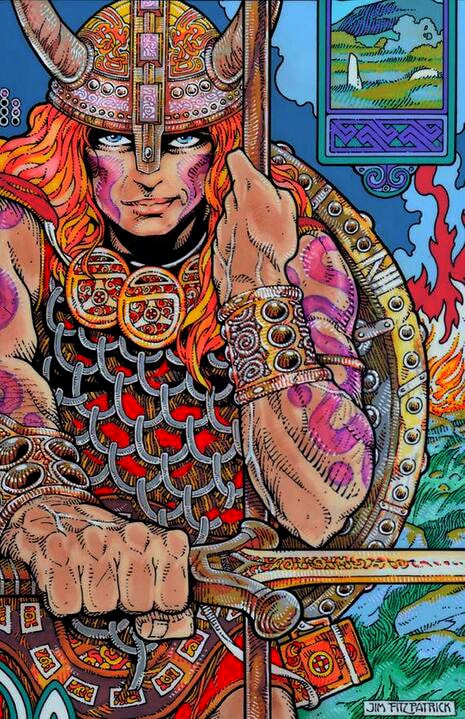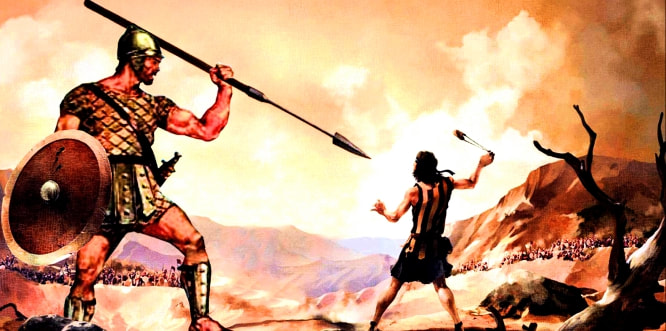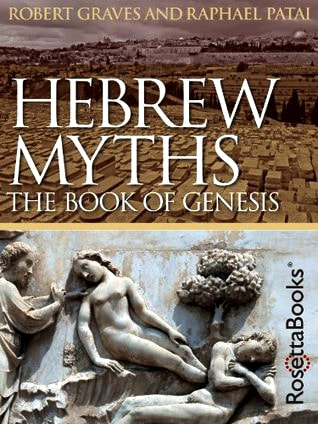From
Hebrew Myths
by Robert Graves
(1963)
Hebrew Myths
by Robert Graves
(1963)
|
|
For many centuries, Jewish and Christian theologians agreed that the accounts of the world’s origin given in Genesis were not only inspired by God, but owed nothing to any other scriptures. This extreme view has now been abandoned by all but fundamentalists - Robert Graves
|
|
|
|
Introduction
After reading this revealing book by eminent historian Robert Graves, we confirm without doubt that little, in anything, in the Hebrew Bible - from Genesis onward - is anything other than fictive. Graves shows that none of it can be taken seriously as actual "history," and also expertly reveals what elements the Jews appropriated from previous high cultures, such as that of the Greeks - Mtsar Power of Myths Myths are dramatic stories that form a sacred charter either authorizing the continuance of ancient institutions, customs, rites and beliefs in the area where they are current, or approving alterations. Jehovah Most other myths deal with gods and goddesses who take sides in human affairs, each favoring rival heroes; whereas the Bible acknowledges only a single universal God. Early Hebrew All pre-Biblical sacred documents in Hebrew have been either lost or purposely suppressed. They include The Book of the Wars of Yahweh and the Book of Yashar, epic accounts of the Israelites’ desert wanderings and their invasion of Canaan. epic accounts of the Israelites’ desert wanderings and their invasion of Canaan. Several other lost books mentioned in the Bible, such as the Acts of Solomon, the Book of Genealogy, the Chronicles of the Kings of Judah, Of the Kings of Israel, Of the Sons of Levi, must have contained many mythic references.
In the thousand years after the Bible was first canonized, the Jews of Europe, Asia and Africa wrote prolifically...the authors included much mythic material, because myth has always served as a succinct validation of puzzling laws, rites and social customs. Many suppressed myths were also allowed to re-emerge in the unquestionably orthodox context of the post-Biblical midrashim. For example in Exodus we read that Pharaoh’s horses, chariots and horsemen pursued the Children of Israel into the midst of the sea (Exodus 14:23).
According to one midrash God assumed the shape of a mare and decoyed the ruttish Egyptian stallions into the water. The Ham myth was once identical with that of the conspiracy against the shameless god Cronus by his sons Zeus, Poseidon and Hades. Book of Genesis Genesis nevertheless still harbors vestigial accounts of ancient gods and goddesses - disguised as men, women, angels, monsters or demons. Fanciful rabbinic expansions of the Genesis stories were still being made in the Middle Ages: Genesis, which is far more closely linked with Greek, Phoenician, Hittite, Ugaritic, Sumerian and other bodies of myth than most pious Jews and Christians care to admit, was thereafter edited and re-edited from perhaps the sixth century BC, onwards, for moralistic ends. Another source of the Genesis Fall of Man is the Akkadian myth of Adapa, found on a tablet at Tell Amarna, Pharaoh Akhenaten’s capital. Adapa, son of Ea, the Babylonian god of Wisdom...This myth supplies the theme of the Serpent’s warning to Eve: that God had deceived her about the properties of the forbidden fruit.
Another possible source of the Genesis Fall of Man is an ancient Persian myth: Meshia and Meshiane at first live on fruit alone, but are then persuaded by the Demon Ahriman to deny God. They lose their purity, fell trees, kill animals, and commit further evil. Babylonian Original Genesis I resembles Babylonian cosmogonies, which begin with the emergence of earth from a primeval watery chaos, and are all metaphorical of how dry land emerges annually from the winter floods of Tigris and Euphrates. Eve's Antetype Heba, wife of a Hittite Storm-god, who rode naked on a lion’s back and, among the Greeks, became the Goddess Hebe.
Lilith, Eve’s predecessor, has been wholly exorcized from Scripture, though she is remembered by Isaiah as inhabiting desolate ruins. She seems, from midrashic accounts of her sexual promiscuity, to have been a fertility- fertility-goddess, and appears as Lillake in a Sumerian religious text Gilgamesh and the Willow Tree.
...Jehovah, according to Isaiah, killed Rahab with a sword. Astro-Theology Seven planetary deities, borrowed from Babylon and Egypt, are commemorated in the seven branches of the Menorah, or sacred candlestick...They were combined into a single transcendental deity at Jerusalem - as among the Heliopolitans, the Byblians, the Gallic Druids and the Iberians of Tortosa.
Genesis supplies popular etymologies for the names of the twelve patriarchs, few of them plausible. The titles and attributes of many other Near Eastern deities were successively awarded to Yahweh-Elohim. Goddess Worship ...most Israelites had embraced the easy-going Canaanite cult in which goddesses played the leading role, with kings as their consorts.
Deuteronomy (Second Law) The Book of Deuteronomy, published under Josiah, bans numerous Canaanite rites, among them ritual prostitution, ritual sodomy, and all forms of idolatry. Mythmongers Busted For many centuries, Jewish and Christian theologians agreed that the accounts of the world’s origin given in Genesis were not only inspired by God, but owed nothing to any other scriptures. This extreme view has now been abandoned by all but fundamentalists. Where it all Came From Since 1876, several versions of Akkadian (that is, Babylonian and Assyrian) Assyrian) Creation Epics have been excavated and published. The longest of these, known as Enuma Elish from its initial two words - which mean ‘when on high’ - is assumed to have been written in the early part of the second millennium BC. It has survived almost complete on seven cuneiform tablets containing an average of 156 lines apiece. The first account of Creation was composed at Jerusalem soon after the return from Babylonian Exile. God is here named. God is here named Elohim... ...The second account (Genesis 2:4–22) is also Judaean, possibly of Edomite origin, and pre-Exilic. Here God was originally named ‘Yahweh.’
Jews and Christians have always been puzzled by these contradictions, and tried to explain them away.
...women devotees continued to trouble Pharisee sages. |
|
|
|
Astarte, one of the most important goddesses of antiquity. Her Canaanite version was Asherah, the consort of Yahweh, before the priestly scribes doctored the cosmogony and iconography. In certain versions of the creation myth, the goddess of love, Aruru, gives birth to man, forming him from the blood (semen) of El. Even when man's creation involves a pair of deities - such as Nuit and Geb - the female takes precedence and is the superior party. Graves writes: goddesses were well known to the Hebrews of Biblical times who worshiped in the groves of the Goddess Asherah...They also honored Astarte, the goddess of the Phoenicians and Philistines.
|
|
|
|
Anat/Anath/Ishtar
This goddess, wife of the Hittite Storm-god, is shown riding a lion in a rock-sculpture at Hattusas - which equates her with Anath - and appears as a form of Ishtar in Hurrian texts.
Goddess as Demiurge Most Near Eastern myths, however, derive from a time when part, at least, of the matriarch’s divine prerogatives had been delegated to her male warrior-escort.
She (Asherah) had become so dear to Jews of both sexes, that those who escaped to Egypt vowed to serve her with libations and cakes made in her image. (See Jeremiah 44:15-19). Though Astarte and Asherah were worshiped by all classes to the very end of the Judean monarchy, nowhere in the Bible is any hint found of their connection with El or Elohim.
|
|
|
|
The goddess Astarte with her tutelary symbol of the dove, and in the form of a dove. Interestingly this is a symbol used by various secret societies, and is a purely female emblem, and is also associated with Venus and Aphrodite. In my opinion it serves as one of the chief emblems of the so-called Cult of Venus or Female Illuminati. (Here for more...)
|
|
|
|
The Bloodthirsty Goddess
Ezekiel’s King of Tyre worshiped Ishtar and watched boys being burned alive as surrogates of the god Melkarth (‘Ruler of the City’). ...many of the acts attributed in Ugaritic mythology to the bloodthirsty Goddess Anath are attributed in the Bible to Yahweh Elohim. Note Dove symbolism or not, the goddess was not only associated with motherhood and gentility. She was primarily a goddess of destruction, retribution and war. As Graves confesses, many of her traits were transposed to male deities such as Jehovah. More mythmongering. The Ugaritic description of how Anath massacres her enemies: She plunged knee-deep in the blood of soldiers, Neck-high in the gore of their companies. Until she is sated She fights in the house… Compare to the words of Jehovah: Yes, I trod them in Mine anger, And trampled them in My fury; And their lifeblood sprinkled upon My garments, And I have stained all My raiment… Cataclysm Such a Creator as El, Marduk, Baal, or Jehovah, must first struggle struggle against water - personified by the Prophets as Leviathan, Rahab, or the Great Dragon, not only because the Creatrix whom he displaces is a goddess of Fertility, and therefore of water, but because the matriarchy can be portrayed in myth as a chaotic commingling of the two sexes which delays the establishment of patriarchal social order.
Jehovah the Serpent God The heretical Ophites of the first century A.D. believed that the world had been generated by a serpent. The Brazen Serpent made, according to Hebrew tradition, by Moses at God’s command (Numbers 21:8–9) and revered in the Temple Sanctuary until the reforming King Hezekiah destroyed it (2 Kings 18:4), suggests that Yahweh had at one time been identified with a Serpent-god - as Zeus was in Orphic art. Memory of Yahweh as a serpent survived in a late midrash according to which, when God attacked Moses (Exodus 4:24) in a desert lodging place in the dead of night.... ...He assumed the shape of a huge serpent and swallowed Moses as far as his loins. The custom at Jerusalem of killing the sacrificial victims on the north side of the altar points to an early North-Wind cult, like that at Athens. |
|
|
|
Is this a symbol which refers to Jehovah as serpent deity? Or is it another symbol of the female sects and societies, concealed by orthodox Judaism? Perhaps it signifies the process of initiation through which an acolyte had to go in order to qualify as a servant of the goddess. It may also be a symbol of his "birth" from the mouth of his serpentine mother, primordial goddess of the deep. He is figuratively her serpent-child and serpent-lord. The undulating serpent is known in some traditions as Ladon or Lotan. (Here & Here for more...)
|
|
|
|
Garden & Serpent
All gardens of delight are originally ruled by goddesses; at the change from matriarchy to patriarchy, male gods usurp them. A serpent is almost always present. Greek Originals These rabbinical doctrines, mostly borrowed at haphazard from Greek, Persian and Babylonian sources, were meant to impress hearers with the amazing range and complexity of God’s works. God Creates Evil God then formed Lilith, the first woman, just as He had formed Adam, except that He used filth and sediment instead of pure dust. From Adam’s union with this demoness, and with another like her named Naamah, Tubal Cain’s sister, sprang Asmodeus and innumerable demons that still plague mankind.
‘Lilith’ is usually derived from the Babylonian-Assyrian word lilitu, ‘a female demon, or wind-spirit'...she is a demoness demoness dwelling in the trunk of a willow-tree tended by the Goddess Inanna (Anath) on the banks of the Euphrates...Hebrew etymology seems to have derived ‘Lilith’ from layil, ‘night’; and she therefore often appears as a hairy night-monster, as she also does in Arabian folklore.
Another Failed Attempt Creating Woman Undismayed by His failure to give Adam a suitable help-meet, God tried again, and let him watch while he built up a woman’s anatomy: using bones, tissues, muscles, blood and glandular secretions, then covering the whole with skin and adding tufts of hair in places. The sight caused Adam such disgust that even when this woman, the First Eve, stood there in her full beauty, he felt an invincible repugnance. God knew that He had failed once more, and took the First Eve away. Where she went, nobody knows for certain.
God tried a third time, and acted more circumspectly. Having taken a rib from Adam’s side in his sleep, He formed it into a woman; then plaited her hair and adorned her, like a bride, with twenty-four pieces of jewellery, before waking him. Adam was entranced.
Divergences between the Creation myths of Genesis I and II, which allow Lilith to be presumed as Adam’s first mate, result from a careless weaving together of an early Judean and a late priestly tradition. The older version contains the rib incident. Lilith typifies the Anath-worshiping Canaanite women, who were permitted prenuptial promiscuity. Time after time the prophets denounced Israelite women for following Canaanite practices; Seven Gates of Eden Eden has seven gates, and the outermost opens from the Cave of Machpelah at Hebron. Adam came upon it while burying Eve’s body there...Adam lies buried in the same cave; his spirit still guards the gate of Eden,119 through which shines a celestial light.
Enoch The first man after Adam who entered Paradise alive was Enoch. He saw the Tree of Life, under whose shade God often rests. Sex & Drugs Psilocybin, the active agent, is now ranked by psychiatrists with lysergic acid and mescalin as among the leading psychedelics - ‘revealers of man’s inner self’. Hallucinogenic mushrooms are common throughout Europe and Asia. Some varieties, which do not lose their toxic qualities when cooked, seem to have been introduced into sacred cakes eaten at Greek Mysteries; and also at Arabian Mysteries, since the Arabic root ftr occurs in words meaning ‘toadstool,’ ‘sacrificial bread,’ and ‘divine ecstasy.’
Ambrosia-eaters often enjoy a sense of perfect wisdom, resulting from a close coordination of their mental powers. The Evil One Samael, though said to mean ‘Venom of God’, is more likely a cacophemism for ‘Shemal,' a Syrian deity. In Hebrew myth, Samael occupies an ambiguous position, being at once ‘chief of all Satans and ‘the greatest prince in Heaven’ who rules angels and planetary powers. The title ‘Satan’ (‘enemy’) identified him both with Helel, ‘Lucifer, son of Dawn’, another fallen angel; and with the Serpent who in the Garden of Eden plotted Adam’s downfall.
A Jealous God According to some accounts, Samael never lay with Eve before Adam had done so. God at first intended Samael to rule the world, but the sight of Adam and Eve coupling, naked and unashamed, made him (Samael) jealous. He swore: ‘I will destroy Adam, marry Eve, and truly rule.’ An alleged desire of divine serpents to impregnate mortal women appears in many mythologies. Sacred serpents kept in Egyptian temples acted as the god’s procreative agents. At the Phrygian Mysteries of Sabazius, women ritually married the god by letting live snakes, or golden replicas, slide between their breasts down to the thighs. |
|
Bizarre meaningless ad-copy and pop-art, or something else?
|
|
Birth by Serpent
Alexander the Great believed that he had been fathered on Olympia by Zeus Ammon wearing serpent disguise; and his was not an isolated case. Barren women would also bathe in rivers, hoping for impregnation by the serpentine river-god. The Fourth Book of Maccabees contains evidence for a popular belief that snakes desire intercourse with women.
|
|
|
|
If on seeing a snake, she is unsure whether he lusts after her or not, she should remove her garments and throw them before him. If he coils into them, then he lusts after her; otherwise, not. And if he does so lust after her, she should have congress with her husband in the snake’s presence - (The Talmud)
Daughters of Cain The women who beguiled the sons of Seth, accepted by the Jews as a race of seductresses. In this case, evil entered the world via sexual seduction, at the hands of promiscuous women rather than the eating of an apple. Was it all due to Samael's sexual envy of Adam, and if so does this not mean that Yahweh's creation was already imperfect from the start? - Mtsar Samael, aware of Adam’s preoccupation with this problem, planned to take further revenge. He and ten of his angels escaped from their underground dungeon and, assuming the shape of incomparably beautiful women, came to the riverbank. There they greeted Adam and Eve, and Adam cried incredulously: ‘Has the earth truly bred such matchless creatures as these?’ |
|
The story is based on a Greek original. (Here for more...)
|
|
Then he (Adam) asked: ‘Friends, how do you multiply?’ Samael answered in a woman’s seductive voice: ‘Men lie beside us in love. Our bellies swell, we bear infants, they mature and do as we have done. If you disbelieve me, I will prove it!’ At this, other fallen angels in disguise swam up from the riverbed. Samael said: ‘These are our husbands and children; and since you wish to know how infants are engendered, let us show you.’ Whereupon the women lay down in their nakedness, each with her supposed husband, and all did ugly things before Adam’s eyes. Afterwards Samael said: ‘Do thus and thus with Eve, for only so can you multiply your race.
The fire of sin began to burn in Adam’s veins, yet he refrained from performing an act of shame publicly in daylight, and implored God’s guidance.
God then sent an angel, who married Adam to Eve, commanding them to pray forty days and forty nights before coupling as husband and wife.
The Essenes The Essene character of this myth is unmistakable: marital embraces being here called ‘ugly things’; and marital desire, ‘the fire of sin.’ Can & Abel Cain offered God a sacrifice of first fruits, while his brother Abel offered a first-born lamb. When God accepted Abel’s gift but rejected the other, Cain’s face turned black with rage. God asked: ‘Why take this ill? Subdue your jealous pride!.’
Hatred Meeting Abel in a field soon afterwards, he told him: ‘There is no world to come, no reward for the righteous, no punishment for evil-doers. This world was not created in mercy; neither is it ruled by compassion. Why else has your offering been accepted and mine rejected?’ Abel answered simply: ‘Mine was accepted because I love God; yours was rejected because you hate Him.’ Cain then struck and killed Abel.
Garbled Nonsense According to others Abel, the stronger of the two, had Cain at his mercy. God encouraged Abel to dispatch him, saying: ‘Do not spare this evil-doer!’ Yet when Cain wept and cried: ‘Brother, forgive me! There are only two of us in the world, and what will our parents say if I am killed?’, Abel mercifully released his grip. God then said: ‘Having spared him, you must die yourself!’ Whereupon Cain rose up, snatched a sharp reed and, not knowing where the vital organs lay, wounded Abel in every part, beginning at his hands and feet. Others say, however, that Cain had watched Adam slaughtering a bull, and therefore hacked at Abel’s neck with a sword.
Abel’s spirit escaped from his body, but could find refuge neither in Heaven - where no other soul had as yet ascended; nor in the Pit - where no other soul had as yet descended; and therefore flew about near by. His blood lay, bubbling and seething, where it was spilt. The whole neighborhood still supports no grass or trees. Afterwards God asked Cain: ‘Where is your brother Abel?’ Cain replied: ‘Am I my brother’s keeper? Why should One who watches over all creatures ask me this, unless He planned the murder Himself? But for Your preference of his offering to mine, I should not have envied him. Nor had I ever seen or heard of a corpse. Did You even warn me that, if I struck him, he would die? My grief is too heavy a burden to bear.’ God then cursed him, saying: ‘What have you done? Your brother’s blood cries unto Me from the ground!’ Yet God had given no signal for the brothers to break off their fight, but allowed Cain to deal Abel a mortal blow; hence Abel’s last words were: ‘My King, I demand justice!’ God, having detected something like repentance in Cain’s heart, let him live, though as an outlaw. Wherever he went, Earth would quake beneath his feet and the wild beasts would tremble. At first they tried to devour him, but he wept and prayed for mercy, at which moment a Sabbath began, and they were forced to desist. Some say that God then made a horn sprout from Cain’s brow, which protected him against their vengeance. Others, that God afflicted him with leprosy; or that He inscribed a mark upon his arm: a warning against any attempt to avenge Abel.
According to one account Cain, unaware that God sees and knows all, dug a grave and there hid Abel’s corpse.
...he doubted what to do until God sent down two birds, one of which killed its fellow and then buried it. Cain followed this example.
Still others hold that Earth, though she drank Abel’s blood, refused to accept his flesh - quaking so violently that Cain, too, was almost engulfed. Wherever he tried to bury the corpse, Earth spewed it up again, and cried at last: ‘I will receive no other body until the clay that was fashioned into Adam has been restored to me!’
Yet Cain had not changed. He still indulged his bodily lusts, amassed wealth by rapine, taught evil practices practices and lived luxuriously. His invention of weights and measures ended mankind’s simplicity. Cain was also the first man who placed boundary stones around fields; and who built walled cities, in which he forced his people to settle.
In Genesis it is suggested that Cain grew jealous because Abel’s offering had been preferred to his own. But since Temple ritual required grain offerings as well as flesh sacrifices, early commentators felt that either some explanation of God’s preference for Abel’s gift should be found - or else some motive for the murder other than jealousy. |
|
|
|
The hopelessly garbled account of Cain and Abel was appropriated from Irish sagas such as those of the Sons of Turean. In the original myth, Cain is Cian, the father of the sun god Lugh. Lugh himself appears in the Hebrew Bible as King David, who as a boy slew a giant with a sling. The Egyptians had their brothers Horus and Set, the Greeks their twins Belus and Agenor, and the Phoenicians their legend of rival twins Usous and Hypsouranius, both clearly appropriated by Jewish scribes. And we must never forget the sidereal canon from which a great many world myths and legends were abstracted. The twins work as metaphors for night and day, sun and moon and other zodiacal phenomena. Regardless of sources, it is not inconceivable that the original myth alluded to the rivalry between prehistoric races. (Here for more...)
|
|
|
|
As I show elsewhere, if the Jews were quite capable of appropriating and adapting the Phoenician (Cadmean) alphabet, why do we stop there and not accept that many other tropes and motifs were also "borrowed" and slightly transmogrified? One needs to explain why the Jews would even need to base Hebrew on the Cadmean letters, if their civilization was so high, perfect and holy. Wasn't Yahweh able to have his chosen people develop their own unique language? After all, the chosen people prided themselves on being set apart from everyone else. Although this fact about language has been played down, it stands as one of the foremost rebuttals against Jewish claims of uniqueness. As said in chapter one of my Astro-Theology book, there's nothing in Judaism and Christianity that didn't come from the Egyptians, Persians, and other superior races.
|
|
|
|
Seth
Adam, fearing that another son born to Eve and himself might share Abel’s fate, abstained from intercourse with her for no less than one hundred and thirty years. During this time succubi often bore demons to Adam as he slept, by causing him dreams of sin and involuntary emissions of seed. Moreover, incubi debauched the sleeping Eve, fathering demons on her.
Like the succubi, these incubi...were the shadowy spirits created by God on the Sixth Day towards dusk.
Some say that God’s angel commanded commanded Adam to lie with Eve, but that he held back until promised a son named Seth - meaning ‘consolation’ - who would relieve his grief for Abel.
When, after Seth’s birth, Adam returned to abstinence, Samael, again disguised as a beautiful woman, came pretending that he was Eve’s sister, and demanded marriage from him. Adam prayed for guidance, and God immediately revealed Samael’s evil shape. Before Eve died, she had borne Adam thirty pairs of twins, a son and a daughter each time, as the result of marital rites conducted in the utmost holiness and decorum.
Adam lived eight hundred years after Seth’s birth. Fallen Angels Lacking female company, the angels known as ‘Sons of God’ found wives among the lovely Daughters of Men...These new creatures were giants, known as ‘the Fallen Ones’, whose evil ways decided God to wipe from the face of the earth all men and women, with their gigantic corrupters. The Sons of God were sent down to teach mankind truth and justice; and for three hundred years did indeed teach Cain’s son Enoch all the secrets of Heaven and Earth. Later, however, they lusted after mortal women and defiled themselves by sexual intercourse. Enoch has recorded not only their divine instructions, but also their subsequent fall from grace; before the end they were indiscriminately enjoying virgins, matrons, men and beasts.
Azael, however, far from repenting, still offers women ornaments and many-colored robes with which to lead men astray.
Others say that certain angels asked God’s permission to collect sure proof of man’s iniquity, and thus assure his punishment.
Others say that Shemhazai and Azael were seduced by the demonesses Naamah, Agrat daughter of Mahlat, and Lilith who had once been Adam’s spouse.
The fallen angels having lost their wings, were stranded on earth until, many generations later, they mounted Jacob’s ladder and thus went home again.
Others, however, make the Sons of God pious descendants of Seth, and the Daughters of Men sinful descendants of Cain. explaining that when Abel died childless, mankind soon divided into two tribes: namely the Cainites who, apart from Enoch, were wholly evil, and the Sethites who were wholly righteous...The Sethites were extraordinarily tall, like their ancestor; and, by living so close to the Gate of Paradise, won the name ‘Children of God’.
Music, Alcohol and Evil Genun the Canaanite, son of Lamech the Blind, living in the Land of the Slime Pits, was ruled by Azael from his earliest youth, and invented all sorts of musical instruments. When he played these, Azael entered into them too, so that they gave forth seductive tunes entrancing the hearts of all listeners. Genun would assemble companies of musicians, who inflamed one another another with music until their lust burned bright like fire, and they lay together promiscuously. He also brewed beer, gathered great crowds in taverns, gave them to drink, and taught them how to forge iron swords and spear-points, with which to do murder at random when they were drunk.
Seductive Women As late as the eighth century A.D., Rabbi Eliezer records in a midrash: ‘The angels who fell from Heaven saw the daughters of Cain perambulating and displaying their secret parts, their eyes painted with antimony in the manner of harlots; and, being seduced, took wives from among them.’ Noah Warned by God of the coming Deluge, Noah spread the news among mankind, preaching repentance wherever he went. Though his words burned like torches, the people mocked him with: ‘What is this deluge?
|
|
|
|
Nuada, high king of ancient Ireland was the prototype for the Jewish Noah. Other pre-Celtic deities and characters turn up in the Jewish scriptures, particularly Cian and Lugh. None of this should be surprising, given that the ancestors of the so-called Israelites and Jews came from the far West, as did the Egyptians, Horus being based on Iusa or Iesa, forest god of the West. Indeed, Lamech and Enoch are loosely based on the most ancient deity Herne (or Nikor), as was the Grecian Hermes. The Jewish Adonai was based on Adonis, Adon and Aton, themselves based on Odin, Donar and Dionysus. Eden was named after the Nordic tree goddess Idunn, Isis after the Nordic Is. (Here for more...)
|
|
|
|
The Deluge
The Deluge began on the seventeenth day of the second month, when Noah was six hundred years old...even Noah could not yet believe that God would wipe out so magnificent a handiwork, and therefore had held back until waves lapped at his ankles.
The floods spread swiftly over the entire earth. Seven hundred thousand evil-doers gathered around the ark, crying: ‘Open the door, Noah, and let us enter!’ Noah shouted from within: ‘Did I not urge you to repent these hundred and twenty years, and you would not listen?’ ‘Now we repent,’ they answered. answered. ‘It is too late,’ he said. They tried to break down the door, and would have overturned the ark, but that a pack of rejected wolves, lions and bears which were also trying to disperse the rest. Throughout the next twelve months neither Noah nor his sons slept, being continually busied with their charges. Some creatures were accustomed to eat at the first hour of the day or night; others at the second, third or fourth hour, or even later; and each expected its own fodder. Noah had parted his sons from their wives, and forbidden them marital rites: while the world was being destroyed they must take no thought for its replenishment. He laid the same prohibition upon all beasts, birds and creeping things. Only Ham, the dog, and the cock-raven disobeyed. The Black Race Ham sinned in order to save his wife from disgrace: had he not lain with her himself, Shem and Japheth would have known that she was already bearing a child to the fallen angel Shemhazai. Nevertheless, God punished Ham by turning his skin black. He also punished the dog, by attaching it shamefully to the bitch after copulation; and the raven, by making it inseminate the hen-bird through its beak.
After the Deluge As soon as his foot touched land, he took stones and raised an altar. God sniffed the sweet odor of burnt offerings, and said: ‘Despite man’s evil disposition, I will never again use water to destroy him.
Uncited Earlier Originals Two ancient myths parallel the Genesis Deluge: one Greek, one Akkadian. The Akkadian, found in the Gilgamesh Epic, was current also among the Sumerians, the Hurrians and the Hittites. In it the hero Utnapishtim is warned by Ea, god of Wisdom, that the other gods led by Enlil, the Creator, have planned a universal deluge, and that he must build an ark. Enlil’s reason for wiping out mankind seems to have been their omission of his New Year sacrifices. Utnapishtim builds a six-decked ark in the shape of an exact cube, with sides of one hundred and twenty cubits, and uses bitumen to caulk it. The ark is completed in seven days. The ark drifts to Mount Nisir, where Utnapishtim waits seven more days. He then sends out a dove which, finding no resting place, returns. After another seven days, he sends a swallow, which also returns. Then a raven which, finding carrion to eat, does not return, because the floods have now diminished. Utnapishtim releases all his people and animals, pours a sevenfold libation of wine on the mountain top, and burns aromatic woods - cane, cedar and myrtle. The gods smell this sweet odour and crowd about the sacrifice. Ishtar praises Utnapishtim, and reviles Enlil for causing a senseless disaster. Enlil cries angrily: ‘No man should have survived my deluge! Are these yet alive?’
Sumerian Version In a fragmentary Sumerian version, the Deluge hero is the pious King Ziusudra. Greek Version The Greek myth runs as follows: ‘Disgusted by the cannibalism of the impious Pelasgians, Almighty Zeus let loose a great flood on earth, meaning to wipe out the whole race of man; but Deucalion, King of Phthia, warned by his father Prometheus the Titan whom he had visited in the Caucasus, built an ark, victualled it, and went aboard with his wife Pyrrha, a daughter of Epimetheus. ...the South Wind blew, rain fell and rivers roared down to the sea which, rising with astonishing speed, washed away every city of coast and plain; until the entire world was flooded, but for a few mountain tops, and all mortal creatures seemed to have been lost, except Deucalion and Pyrrha. The ark floated about for nine days until, at last, the waters subsided, and it came to rest on Mount Parnassus or, some tell, on Mount Aetna; or Mount Athos; or Mount Orthrys in Thessaly. It is said that Deucalion was reassured by a dove which he had sent on an exploratory flight. ...the Goddess Themis (‘Order’) renews man; and so probably did Ishtar the Creatrix in an earlier version of the Gilgamesh Epic. Deucalion’s son Hellen was the supposed ancestor of all Greeks.
|
|
|
|
Captivating stories such as that of David and Goliath, the walls of Jericho and ten plagues, etc, pertain chiefly to destructive cometary action. Such anecdotes are not restricted to the Bible and Jewish texts, but are found the world over. Not only were the stars sincerely considered "gods," so were comets deemed malefic forces. The whole story of Satan's fall from heaven pertains to the lore about comets. (Here & Here for more...)
|
|
|
|
Matriarchy
That each of the patriarchs, except Joseph, had a female twin whom he married, suggests a compromise in the days of the Judges between patriarchal and matrilineal institutions, and therefore joint worship of a god and goddess.
Moses flees from Egypt in disgrace, serves Jethro the Midianite as a herdsman for the hand of his daughter Zipporah, whom he has treated courteously at a well and, returning home accompanied by his wife and sons, after a fiery vision of God - is suddenly attacked on the way by a supernatural being. Zipporah thereupon circumcises him - circumcision being...part of the marriage ceremony.
Sidereal Mythology Before dying at the age of one hundred and ten years, Joseph had great-grandchildren to dandle on his knees. One day he told the brothers: ‘Our God will assuredly lead you back to Canaan, the Promised Land. Since I have now reached the end of life, pray take my body there with you, and He will repay your kindness.’ These were his last words. He was duly embalmed and laid in a sarcophagus on the banks of the River Sihor.
|
|

